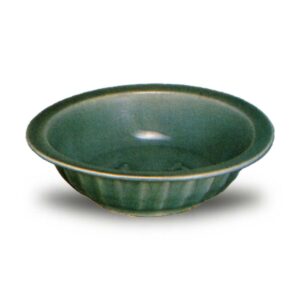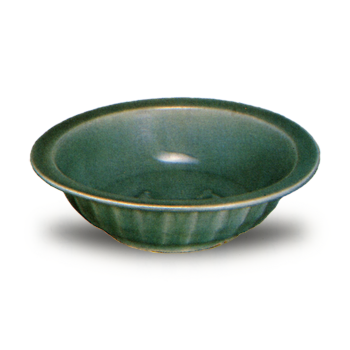
The largest celadon kiln in China. It was a large kiln with more than 200 kiln sites in the area centered on Longquan County in Zhejiang Province and encompassing the counties of Qingyuan, Yunhe, Songyang, Lishui, and Jingning. Celadon porcelain kilns were probably established in this area during the Five Dynasties, and probably began as part of the Yuezhou lineage. The shards excavated from the Longquan kiln are similar to those of the Yuezhou kiln in terms of engraving and glaze tone. However, it is likely that the Longquan kilns began to produce large quantities of beautiful powder blue celadon, known as “incunctor celadon,” after the Southern Song dynasty (960-1279). Research on the Longquan kiln site has been conducted by Chen Wanli since 1928, and after the liberation of China, the Zhejiang Provincial Cultural Relics Management Committee has continued its investigation. According to the survey, the main Longquan kiln sites are located in Jincun, Dama, Mutai, and Xikou, in addition to the large kiln at the foot of Mount Liuhua, commonly known as Liudian. The large quantities of celadon produced at these sites were exported to the Orient, Europe, and Africa from early on, and Longquan kiln celadon bowls became famous in China. Longquan celadon of the early Southern Song dynasty (12th century),, known as qunqi celadon, was made with a thick, powdery blue glaze and, in principle, had no underglaze ground pattern. In the late Southern Song period, motifs such as floating peonies and twin fish appeared, and the glaze became slightly greenish in color. In the Yuan dynasty, the glaze became yellowish green rather than blue, the so-called Tianlongji celadon.
This was due to a shortage of high-quality raw materials as mass production became too excessive and production was disrupted. The production of Longquan ware continued into the Ming dynasty (1368-1644), but the glaze became shiny and glassy, and although it is used in the tea ceremony in Japan as shichikan celadon, it is inferior as celadon, signaling the end of Longquan ware. Almost all types of vessels, from small conglomerates to large vases large enough to hold a person, were produced.



